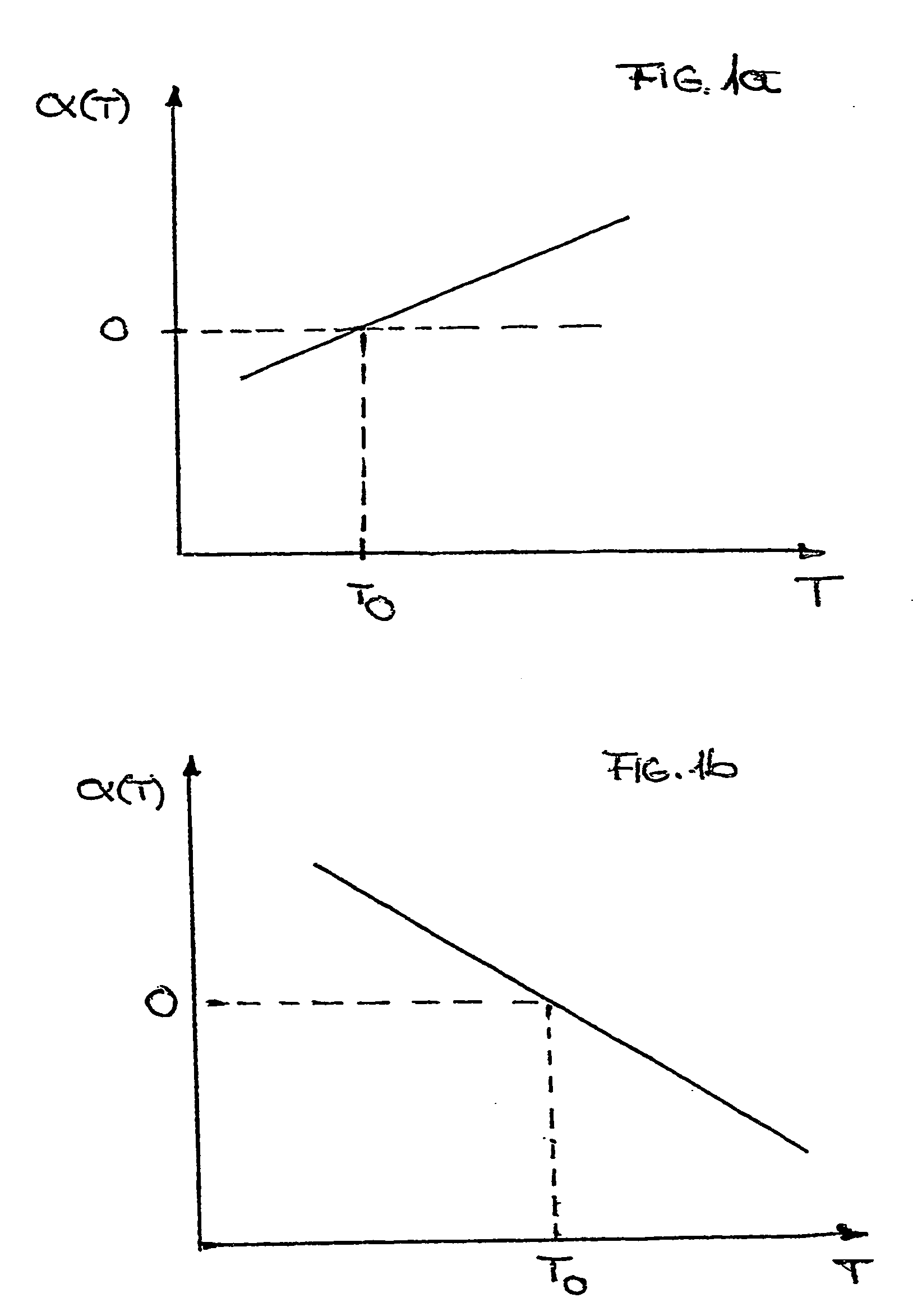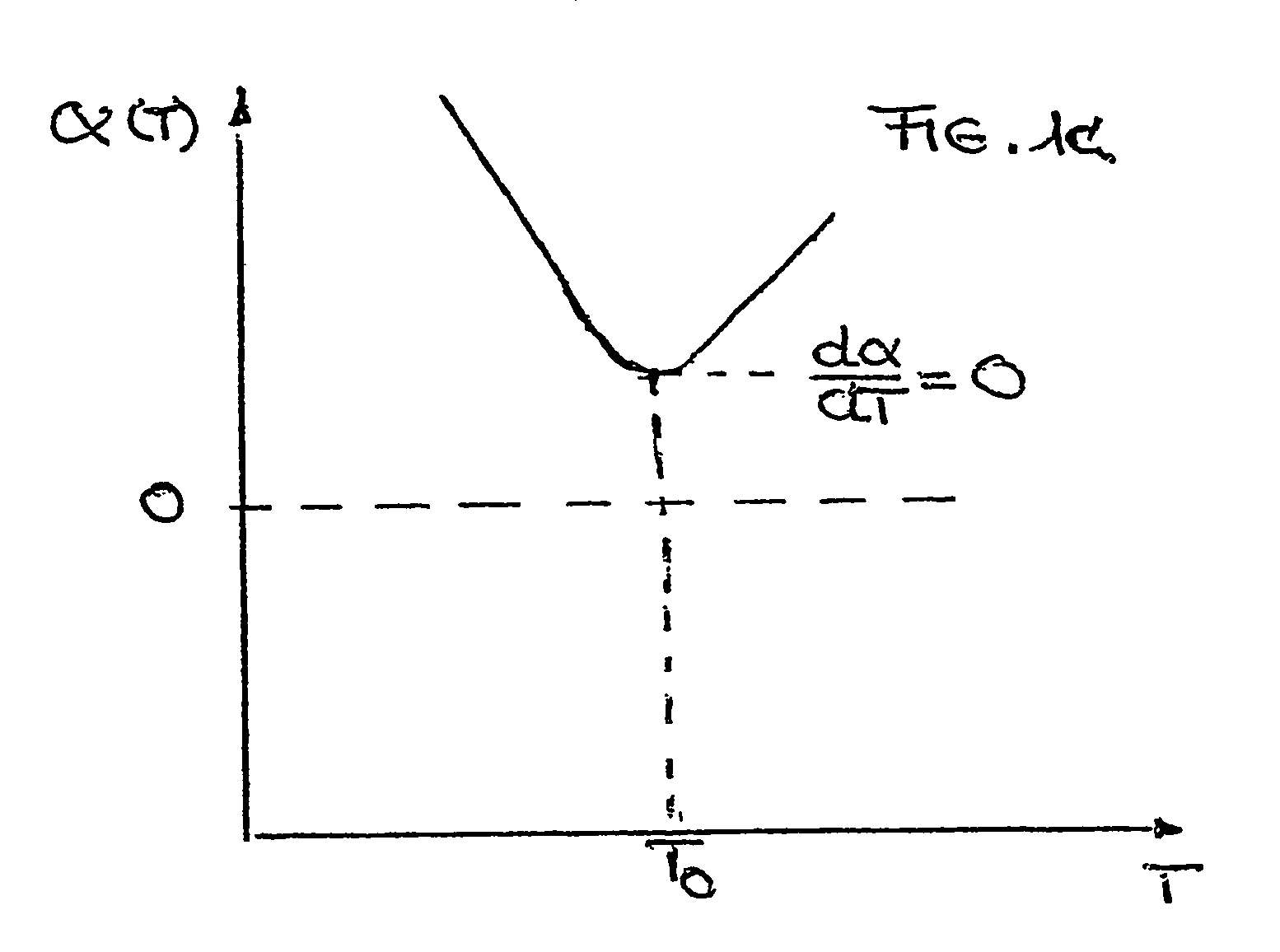Optical component that includes a material having a thermal longitudinal expansion with a zero crossing
a technology of optical components and thermal longitudinal expansion, applied in the field of optical components, can solve the problems of active removal of heat introduced into optical components, and the risk of failure of additional components
- Summary
- Abstract
- Description
- Claims
- Application Information
AI Technical Summary
Benefits of technology
Problems solved by technology
Method used
Image
Examples
Embodiment Construction
[0039] A temperature-dependent coefficient of thermal expansion of a substrate material is a temperature-dependent function α(T).
[0040] There are several possibilities for the function of α(T) for materials that are used in optical components They are shown in FIGS. 1a to 1c.
[0041]FIG. 1a is a graph of coefficient of thermal expansion α(T) as a function of temperature (T) for a TiO2-doped glass in a temperature range of approx. 20° C. to 70° C., which is of interest for EUV lithography. With a rising temperature, the temperature-dependent coefficient of thermal expansion takes on a value of zero at some point, and so, its sign changes from negative to positive. The temperature-dependent coefficient of thermal expansion thus has a zero-crossing at a temperature T0. If the temperature T is higher than T0, then the temperature-dependent coefficient of thermal expansion is positive, that is, as temperature increases, the material expands. For temperatures T lower than T0 the temperatu...
PUM
| Property | Measurement | Unit |
|---|---|---|
| wavelength | aaaaa | aaaaa |
| reflectivity | aaaaa | aaaaa |
| reflectivity | aaaaa | aaaaa |
Abstract
Description
Claims
Application Information
 Login to View More
Login to View More - R&D
- Intellectual Property
- Life Sciences
- Materials
- Tech Scout
- Unparalleled Data Quality
- Higher Quality Content
- 60% Fewer Hallucinations
Browse by: Latest US Patents, China's latest patents, Technical Efficacy Thesaurus, Application Domain, Technology Topic, Popular Technical Reports.
© 2025 PatSnap. All rights reserved.Legal|Privacy policy|Modern Slavery Act Transparency Statement|Sitemap|About US| Contact US: help@patsnap.com



